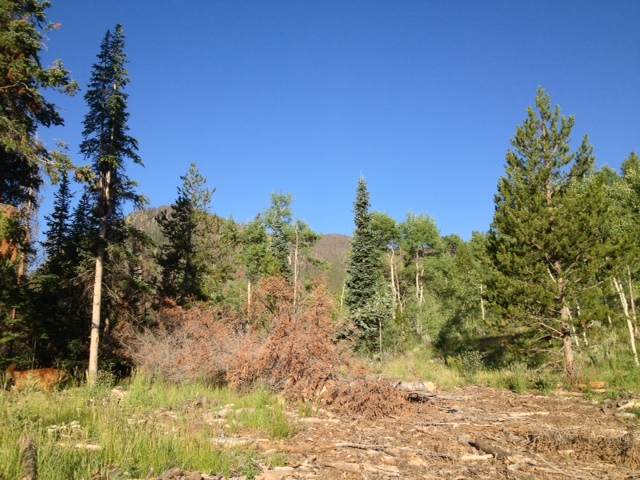 Long-time visitors to Copper Mountain will probably remember a time not so long ago when many of the lodgepole pine forests turned bright orange, as tree-killing bark beetles spread far and wide across the northern Rockies.
Long-time visitors to Copper Mountain will probably remember a time not so long ago when many of the lodgepole pine forests turned bright orange, as tree-killing bark beetles spread far and wide across the northern Rockies.
In the last few years, most of those trees have dropped all those bright-colored needles and now stand as gray ghosts on the hillsides and in the canyons of Summit County. For now, the pine beetle epidemic has stopped, and the good news is that the bugs stopped short of Copper Mountain. The last few serious pockets of infestation were in Tenmile Canyon, between Frisco and Vail Pass, but big swaths of forest around Copper remained relatatively untouched.
Forest experts aren't exactly sure why the outbreak waned when it did, but they speculate that the bugs basically ate themselves out of house and home. Without suitable large brood trees, there's just no way for the tiny insects to keep reproducing. Learn more about Summit County forests by taking a tour, or volunteering with the Friends of the Dillon Ranger District.
Also, the forests around Copper have slightly better mix of trees, with plenty of spruce and subalpine fir mixed in with the lodgepole pines that predominate in other areas of Summit County.
And there's more good news. Foresters who have been studying the beetle epidemic say there are signs that most of the beetle-killed areas are growing back quickly. In the long run, Summit County's forests may be healthier then they were before, with several different species growing back in areas that were previously filled with just lodgepole pines.
In some sunny areas, and in lodgepole stands where the dead trees where cleared by the Forest Service, thick clumps of aspen are taking advantage of the new conditions. Foresters and wildlife experts say that's a good thing, since aspens are less flammable than conifers and also provide better habitat for all sorts of animals, including birds, small mammals and even elk and deer.
By studying test plots at a national forest site dedicated to research, they also found that, in areas that aren't being logged, the dead lodgepoles are being replaced by other evergreens, including majestic spruce trees and spiky subalpine fir. And while concerns about rampant wildfires emerged during the height of the pine beetle outbreak, research in the last few years has shown that, once the beetle-killed trees drop their needles, they aren't necessarily more flammable than live green trees.
All in all, Summit County's forests are in transition. The bugs, which co-evolved with lodgepoles pines, are a change agent. Once the forests reach a certain age, they have to give way to new growth. In 20 to 30 years, many of the areas affected by the bugs will once again be green, as the cycle of forest regeneration marches on.
Follow us on Twitter for daily updates on Copper Mountain and if you're ready to book a trip, browse our rentals page.
Filed in Colorado News | Copper Mountain News | Environment